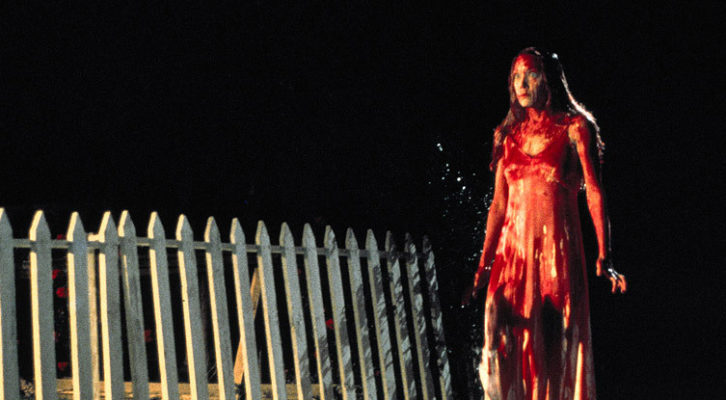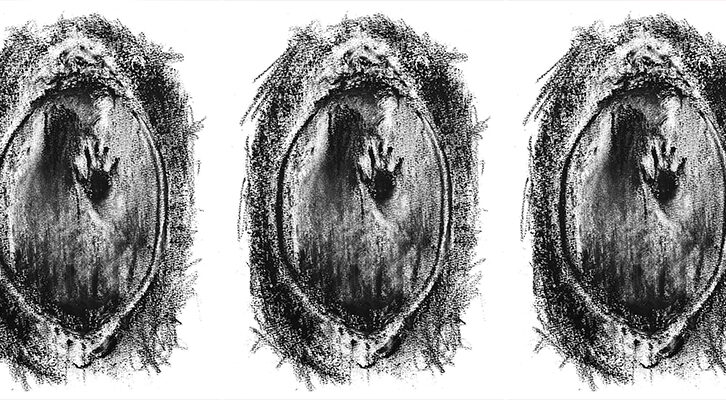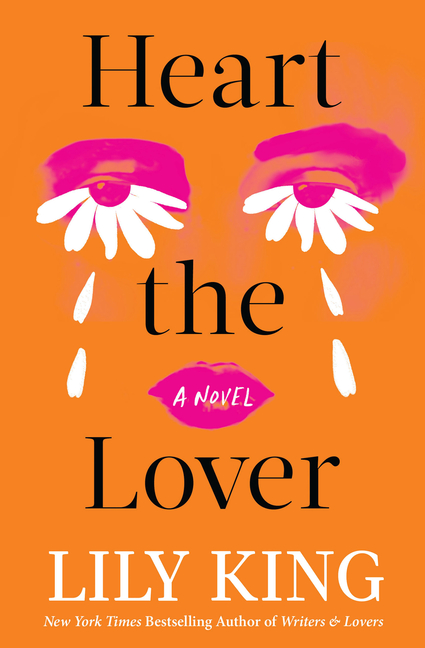
Embrace Your Monstrous Flesh: On Women's Bodies in Horror
"Horror films offer a fantasy space for women whose bodies betray them"
This essay originally appears in The Lifted Brow #34.
Ubud, sometime in late 2015: I’ve been stranded here a week or two, and the sky is an empty screen of snowy static. An active volcano teeters on the brink of explosion, spurting ash clouds like pre-cum, sullying the sharp blue skies and making it too dangerous to fly.
At first, it’s like my neurotic fantasy of going to prison, where decision-making is scaled back to which books to read and which weights to pump. My jailer is a Scottish yogini named Bex, who freestyles sermons on Third-World poverty when the class is defenseless in downward dog, a roomful of pert arses saluting the ferny canopy above. Gruel is cut-price Buddha bowls and Ayurveda smoothies that my travel insurance will reimburse me for anyway.
“Oh Ubud, lovely, boring Ubud!” writes Geoff Dyer. “It was so lovely, but we were there too long, far too long.”
When the skies clear, I discover burst capillaries curling in microscopic fleur-de-lis beneath my skin. It’s as if chaos has moved from the ether to take up residence in the soft flesh of my inner-arms. On a Jetstar flight, somewhere over the Indian Ocean, the fever sets in, and for the next six hours I alternate shivering, sweating, and vomiting this morning’s tropical fruit buffet into a toilet.
Each day, a new plague begins. Am I hallucinating when, near the close of another insomniac night, I hear chickens squawking? I rouse my boyfriend who catches a fox in the throes of decapitating our flock. After sleep finally comes, I wake with the arthritic joints of an octogenarian. My eyes start glowing like a demon, which I later learn is the singular pain of lacerated eyeballs.
It takes a month and several doctors to confirm that a rabid mosquito has penetrated my skin. This mosquito has transmitted a virus. This virus worms its way through veins and corpuscles, infecting not only my body but also my mind; an “impending sense of doom” is listed amongst more visceral symptoms.
I’ve seen enough horror films to know that this virus should bring me to knowledge. Transgress your body’s borders, shed your skin, embrace your monstrous flesh. Freed of the shackles of the vulnerable female body, I will be reborn as a woman who devours.
*
Is the ethereal Sissy Spacek of Brian de Palma’s Carrie (1976) the virgin mother of monstrous women?
In the classic study Men, Women and Chainsaws: Gender in the Modern Horror Film[1], film scholar Carol J Clover positions Carrie as the archetype of the “victim-hero”: a figure who emerged post women’s lib to challenge a sadistic male gaze.
Carrie’s bleeding body disrupts the soft porn fantasy of the opening locker room scene. The reeling naïf parts the ocean of steamy nubile flesh, wild-eyed with the terror of her first period. She taints the blonde Beckys with her excess, smearing her heavy flow on their pristine gym ensembles.
Her fear is met with an indelible image of teenage cruelty: a shrieking pack of girls pelting her cowering body with tampons. Plug it up! Plug it up! Plug it up! Carrie’s body must be contained, but the tide they seek to stem isn’t just her monthly abjection. The site of her horror is also the site of her power.
Deep down, we know that Carrie’s monstrous gift isn’t born of trauma. It was lurking inside her all along, waiting for womanhood to spring forth. Her peers punish her for knowing too little. But her God-fearing mother, with her whips and her chains, punishes her for knowing too much.
When Carrie’s classmates douse her virginal body in pig’s blood in the final scene, the cycle is complete and her fury may finally be unleashed.
*
Bored in Ubud, I attend a menstruation class at Yoga Barn with Tina, an Earth Goddess whose encouraging smile cracks at the corners. She lives in a nearby commune where each girl, on the occasion of their first period, is bestowed a ruby bracelet. It signifies that their blood is a gift, Tina says, not a curse.
Tina says that when women bleed, it is as if a veil of perception has been lifted. This is why some cultures send us away each month, for fear that we know too much. The women around me nod in fervent agreement, several of whom have quit their corporate jobs to eat, pray, love in search of Elizabeth Gilbert’s big magic.
I recall the words of Harper, the mad Mormon bride in Tony Kushner’s AIDS epic Angels in America (1993), as she tells the infected Prior that the sick are soothsayers. This is the very threshold of revelation.
*
Early in Raw (2016), director Julia Ducournau lets us know that our protagonist Justine (Garance Marillier) is not only an incarnation of her Sadean namesake, a virtuous maiden in a bestial world, but also Carrie’s heir. The latest hazing ritual at veterinary school is to douse the unsuspecting new recruits in animal blood, a spectacle made more sadistic with the knowledge of Justine’s vegetarianism. With clotted hair and blood-smeared face, the image’s antecedent is clear.
Justine is the model student, the good girl, the virgin—she sees herself as “average”—who initially refuses the mentality of the pack. Both her vocation and her vegetarianism are familial inheritances, but her older sister Alex (Ella Rumpf), who’s refashioned herself as a carnivorous badass at college, subjects her to the rules of the fold. Alex forces a raw rabbit kidney into the lifelong vegetarian’s mouth—a grotesque symbolic rape.
After the foreign object enters Justine’s body, its protest begins: a painful all-over rash that peels; bent over the toilet bowl, vomiting stringy hairballs as if an animal self lurks within; a body writhing with cramps that look decidedly menstrual. When Justine shudders beneath her bedsheets it looks like she’s jerking off, but underneath she’s scratching a more literal itch.
Ducournau aligns Justine with the animal, juxtaposing her transformation with shots of a restrained horse struggling against the bit, or a pregnant cow undergoing an ultrasound. Her hunger grows wolfish, too, as if one taste of flesh were enough to make her insatiable. She can’t shovel meat into her maw fast enough.
The good girl becomes a whore, making out with her new-found image in the mirror, libidinous on the dance floor, and seducing her gay roommate. The choice of a queer friend as deflowerer seems like a refusal of the patriarchal pact, but his coldness the next day is het as anything. “What, I’m too crazy now?” she yells.
When she gives in to her most primal urge, she lusts after not the sweet flesh of young men but instead that of her sister’s severed finger. This occurs when Alex is trying to tame Justine’s body, plucking her eyebrows and inflicting her first Brazilian. “Beauty is pain!” Alex insists, before her pointer is amputated by wayward scissors. Justine gnaws on it like a chicken wing, blood dripping down her chin.
Now the victim-hero controls the gaze. Where previously she was subjected to the lecherous looks of a sleazy trucker or a geriatric patient at the hospital, she is now the one who stares. When she’s forced into a cupboard with a stranger in another hazing, she bites off his lip in an act of both dissent and desire.
But these mammalian hungers, they cannot be sated.
*
Horror films offer a fantasy space for women whose bodies betray them. When the female flesh invariably exceeds its bounds, it may become a site of transcendence, even resistance.
It’s no coincidence that women’s monstrosity manifests during times of hormonal flux: menstruation, sexual awakening, pregnancy. On the cusp of teenagerdom, the girl is thrust into an awareness of her body as witnessed by others, becoming something other to herself. The monstrous body allows her to disrupt the patriarchal gaze, reclaiming its power as her own.
In Ginger Snaps (2000), Ginger (Katharine Isabelle) is bitten by a werewolf attracted to her menstruating body, its virus turning the outsider into a vixen who devours the jocks who once taunted her.
In Teeth (2007), abstinent virgin Dawn (Jess Weixler) only discovers her vagina dentata when her teen crush Tobey (Hale Appleman) rapes her. The castrating woman becomes a kind of avenging angel.
In The Brood (1979), repressed housewife and mother Nola (Samantha Eggar) is bestowed a new somatic language. Through experimental treatments in psychoplasmics, she sublimates her excess of feeling into a throbbing, hairy womb, which protrudes outside of her body. When she’s angry she gives birth to a brood of gremlins who express her rage with their razor teeth.
*
Once the plagues clear, my body refuses to forget its suffering. I’m ferried between doctors whose only advice is to rest. When the body has been in severe discomfort for so long, its pain receptors can become overstimulated and, as a mode of protection, interpret any external stimuli as hurt. The world becomes a daily assault.
Each fortnight a kindly Chinese medicine practitioner, Rafaelle, punctures my skin with needles and sends me away with a jar of pills called “Blood Moving Formula” or “Blood Cleansing.” I don’t know if it’s working, but I find the ritual comforting, as are his homilies on how the world moves too fast.
My body swells with its sadness. An extra layer of fat makes it alien, protecting the muscles that are atrophying in inactivity. To be in constant pain comes with an exhaustion of singular depths. At times I wish that it was physically visible, beyond these signs of disuse and neglect.
How to trust your body when it radiates with phantom hurts? On good days, it’s no more than a fog of malaise. On the worst, it is like the brutal machine from Kafka’s “In the Penal Colony,” which inscribes the prisoner’s crimes into his skin with needles, working from within. Like its victim, I know for not what I’m being punished.
*
In the wake of film theorist Robin Wood’s “American Nightmare: Horror in the 1970s”[2], it’s hard to dispute that the horror film provides a space for the return of the repressed.
Basic repression is required to become a subject, allowing the screaming animal to become a human being. Surplus repression transforms us into good “monogamous heterosexual bourgeois patriarchal capitalist” subjects. What evades subconscious repression is tamed by cultural oppression: sexual energy, queerness, female sexuality (and its successful sublimation into creativity)—that which threatens patriarchal order. Horror provides a space for the repressed to return yet remain contained, says Wood, explaining the popular genre’s attraction/repulsion.
What makes the The Love Witch (2016) genius is that director Anna Biller reveals the real terror that lurks in the hearts of men. Horror is as much emotional as corporeal, laying bare the attraction/repulsion of heterosexual romance. In interviews she grins like a Stepford Wife, declaring the film an autobiography.
After Elaine’s (Samantha Robinson) husband leaves her, she sets off to California to refashion herself as the ultimate woman, somewhere between a raven-haired Russ Meyer pin-up, a fucked-up starlet from Valley of the Dolls (1967), and Samantha from Bewitched.
To be a love witch is to recast yourself as an impossible figure of male fantasy. “According to the experts, men are very fragile,” explains Elaine. “They can get crushed down if you assert yourself in any way.” A love witch knows that she should be beautiful but obtainable, desirable but yielding, sexy but not slutty, loving but not needy, smart but not too smart. A love witch makes a man feel like a man.
Barbara Ehrenreich and Deidre English’s 1973 study Witches, Midwives and Nurses showed that witches across history have been burned, hung, beheaded for knowing too much. Witches were women charged as sexual, accused of trysts with the devil. Witches were women who consorted with other women, trading herbal remedies and providing obstetric guidance.
“They burned us at the stake because they feared the erotic feelings we elicited in them,” says Elaine’s mentor. To be a love witch is to reclaim this power for yourself, and do with it what you will. She’ll cook you dinner and begin stripping before your steak has cooled. She’ll wax lyrical on eighteenth-century libertine literature, if that’s your kink. She’ll nurse your wounded ego and purr “Poor baby. Poor, poor baby.” She can destroy you with her gaze, hypnotic and annihilating.
She’s a masochist, taking pleasure in her hurt. When Elaine touches herself, the voice of her ex-husband and her father echo in her head: “Are you crazy or are you stupid?” She rewrites their rebukes—on her weight and loss of weight, her deficiency in caring for hearth and home, her lack or excess of desire—as erotica. The cop, the figure of masculine authority, is ready with a diagnosis: “What you call love is a borderline personality disorder.”
Biller, who served as set and costume designer too, also revels in witty excess. Sexual energy explodes in an aesthetic of pure nostalgia: the saturated colors and hard lighting of sixties melodrama evoke a time when women were simpler. Elaine’s Victorian apartment is a tarot card made flesh, bedecked in primary-colored occult paintings, velvet furnishings, and bubbling cauldrons spurting love magic.
Each man upon whom she bestows his fantasy is undone by his desires. They become indistinguishable once they start crying and moaning, growing desperate, libido drowned in a pool of sentiment. The man in love is a woman, and it literally destroys them. “He was just being really obsessive and gross, and his aura became really . . . murky,” says Elaine, with nose upturned.
She buries the dead in shallow graves, returning men to the earth with a witch bottle (filled with piss, a bloody tampon and sprigs of rosemary) to guide them to nirvana. Elaine in divine voiceover: “Tampons aren’t gross. Women bleed, and that’s a beautiful thing.” As natural as the seasons. As natural as romance, which the love witch refuses to give up on.
*
The doctors quash my reveries of returning to the healing bosoms of Bex and Tina in Ubud. If I am infected again, I will begin hemorrhaging beneath my skin.
At least the blood will stay on the inside, I think. This sleepy limbo is better than the raw months when, in the gloaming, I wondered how it might feel to draw the sharpest kitchen knife, gifted by my boyfriend’s mother, across the soft flesh of my inner-arms and unleash the chaos.
Now I am too tired to hunger for that, or anything much at all. The sick mind grows narcissistic, obsessed by the contours of its woe; the emotions of others repulse me. Plug it up! Plug it up! Plug it up! I stay home, pouring over studies of masochism, trying to find new languages for pain. Freud implies that masochism is the feminine condition. To be a masochist, says Kristeva, is to abject the self.
Perhaps it’s the feelings of impending doom, but I find myself searching for signs of prophecy. After dreaming of Emily Dickinson, I buy a collection in the hope of divining some message from the patron saint of sad girls. Pain has an element of blank; / It cannot recollect / When it began, or if there were / A day when it was not.
Maybe she is telling me that pain was sort of lurking inside my body all along, natural. Mother Nature. Gaia, Dione, Virgin Carrie, when shall I be reborn?
__________________________________
[1] Here, Clover also penned the term ‘final girl’, referring to the survivor of the slasher film.
[2] In his 1986 book Hollywood from Vietnam to Reagan.
Rebecca Harkins-Cross
Rebecca Harkins-Cross is a writer, editor, critic and researcher based in Melbourne, Australia. She is currently the film editor for The Big Issue, film columnist for The Lifted Brow and is undertaking a PhD in Creative Writing at Monash University. She was a theatre critic at The Age from 2012-2015.


















